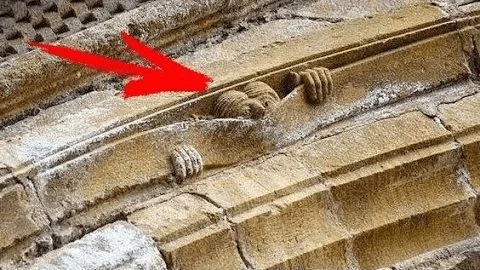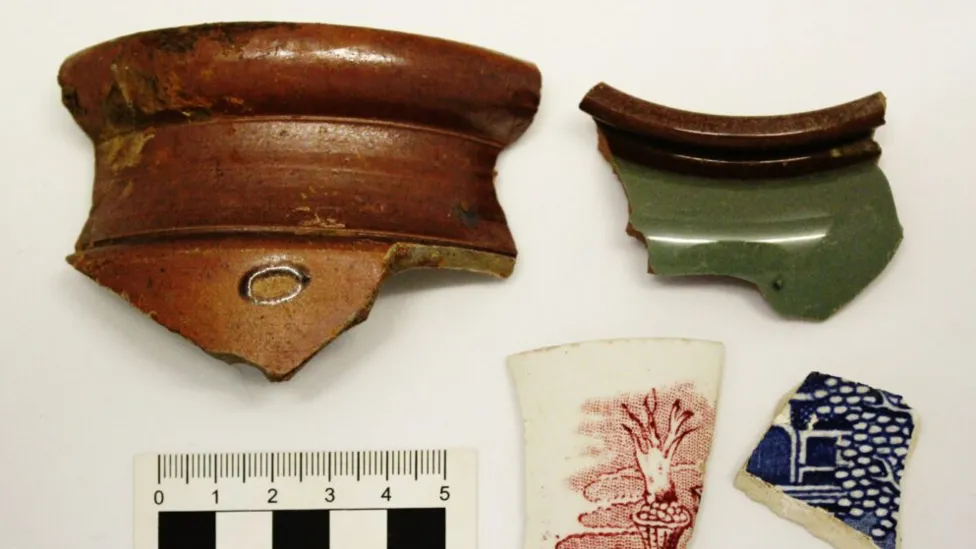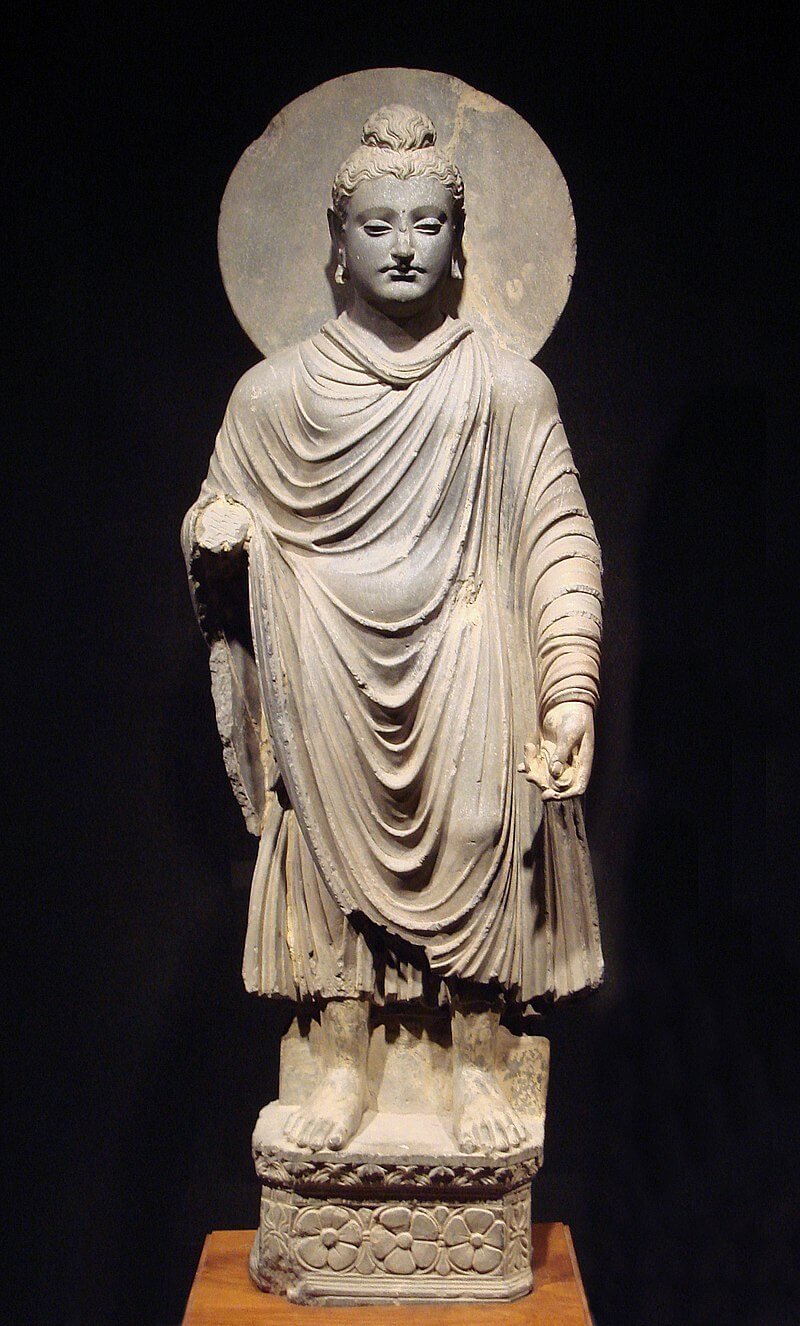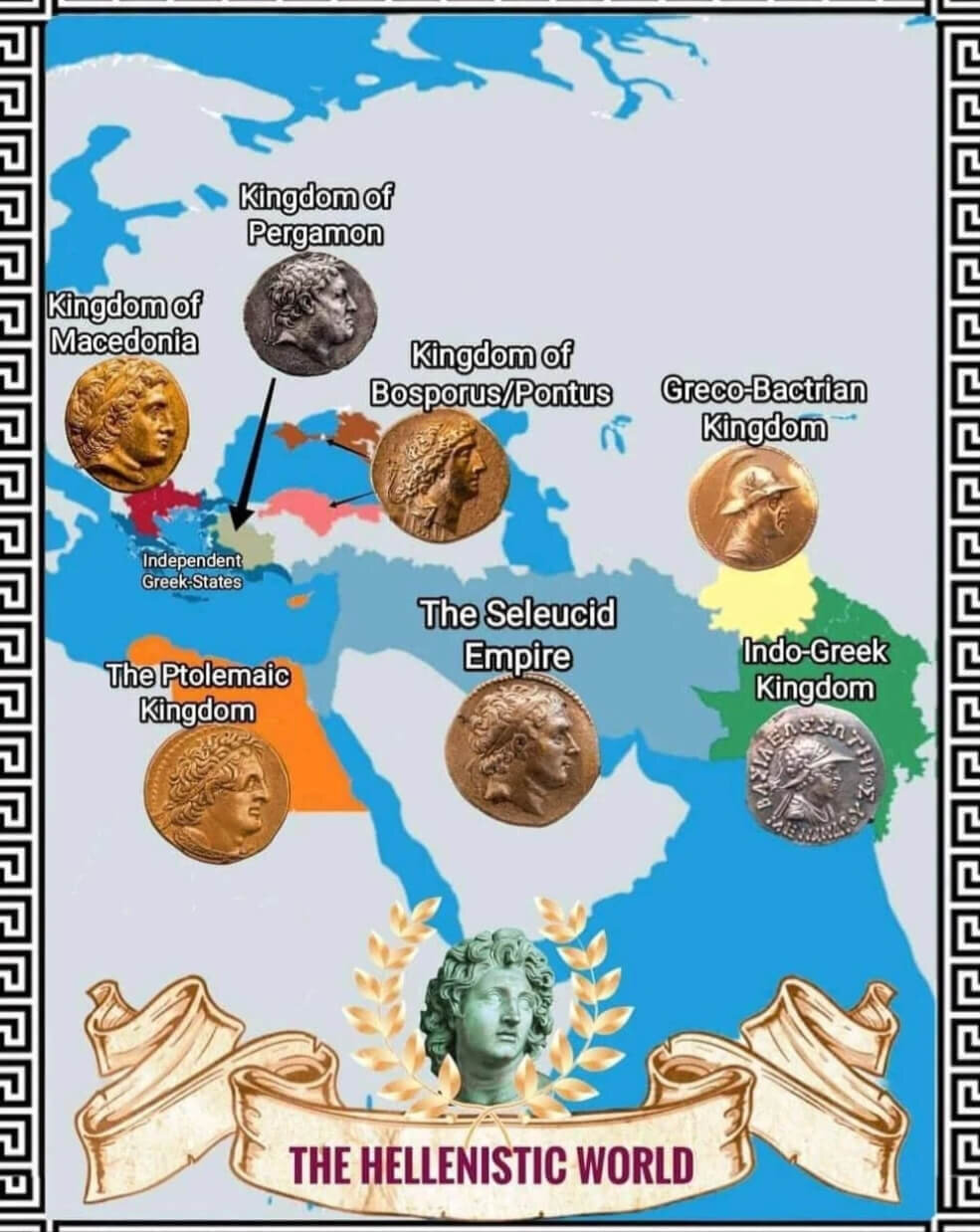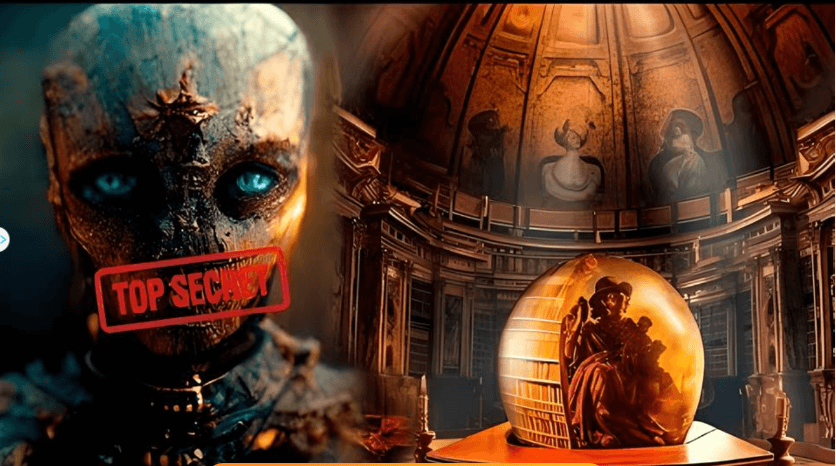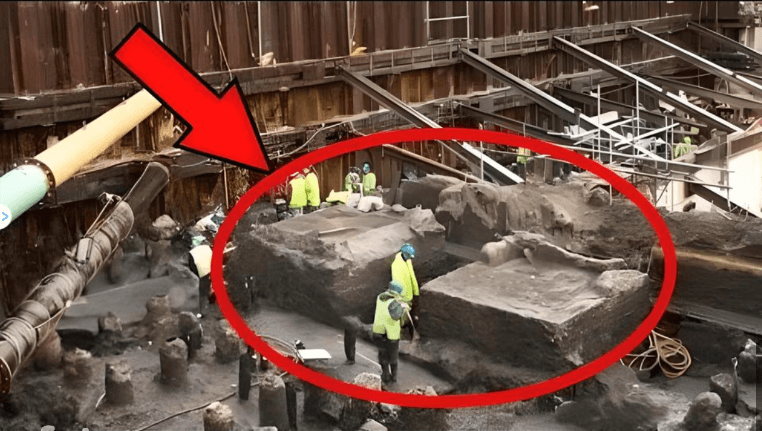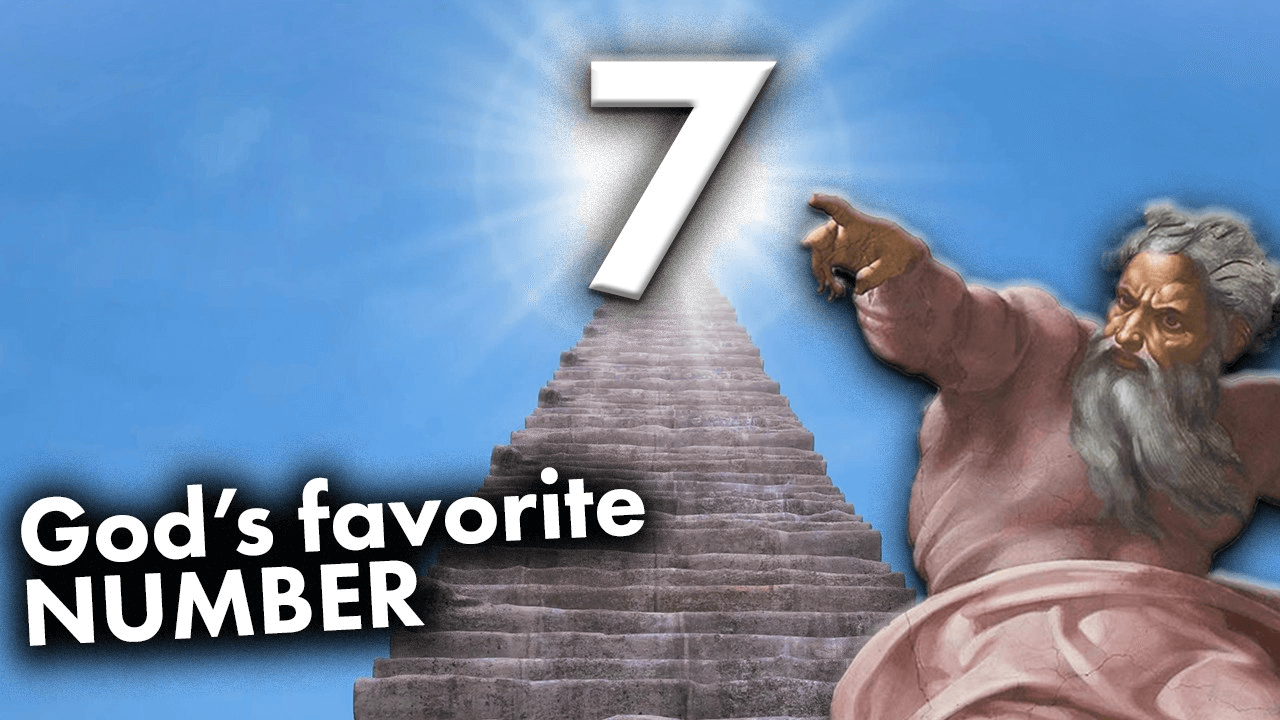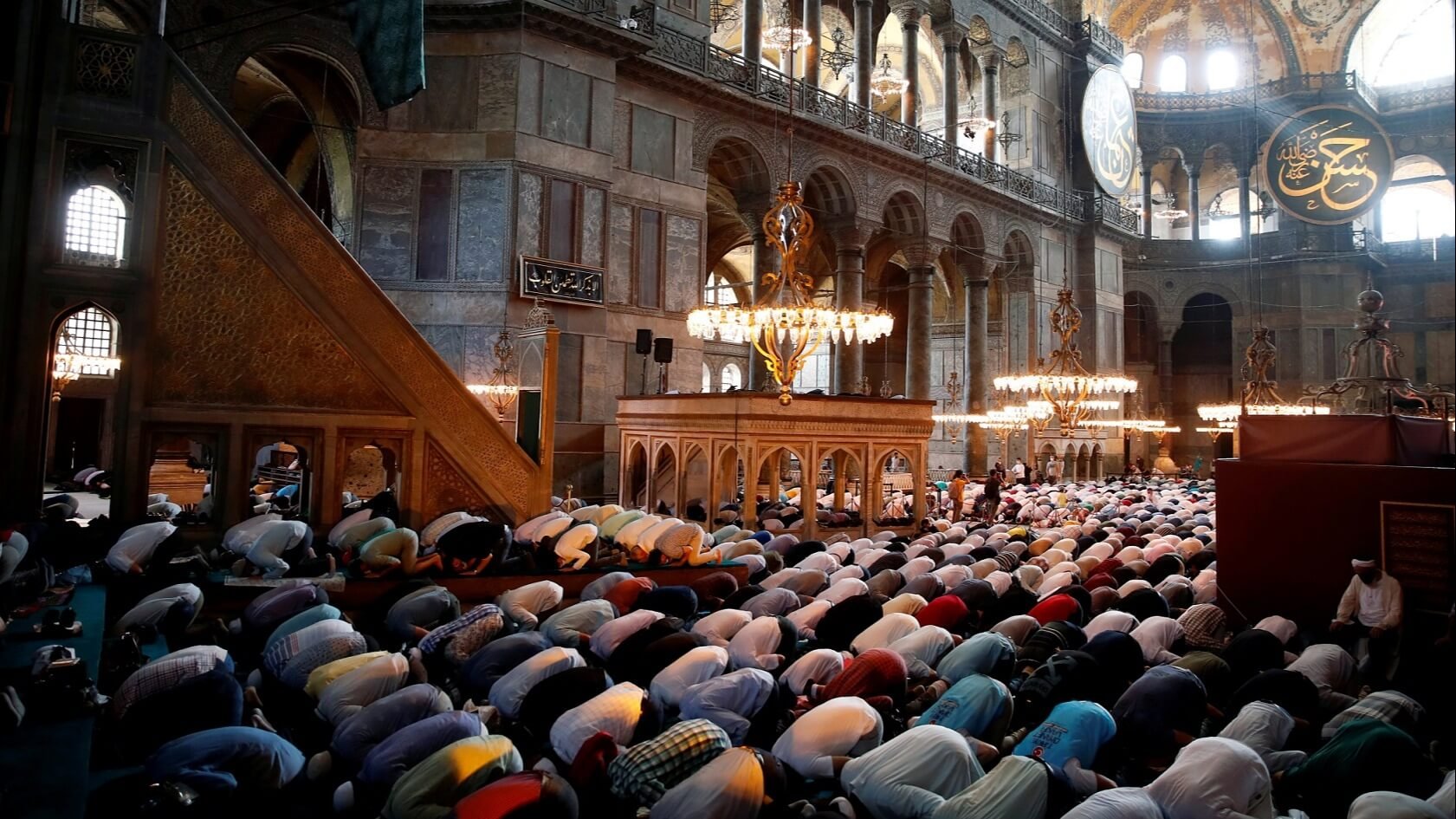When delving into the distant past, distinguishing between myths and facts can be quite challenging. With no living witnesses to attest to the actions of our ancestors hundreds or thousands of years ago, understanding their motivations and methods becomes a matter of speculation. Indeed, we cannot definitively ascertain how or why they achieved the remarkable technological feats showcased in this video. However, that doesn't mean we can't engage in informed speculation and enjoy pondering the possibilities. So, let's embark on this journey of imagination and have some fun guessing!
A number of pieces of pottery discovered at the site
Ancient artifacts dating back to 10,000 BC discovered during road construction project
Archaeologists working on a major road project in Leicestershire have uncovered historical artifacts dating back 12,000 years. Among these finds are flint instruments from the Mesolithic Period (10,000-4,000BC), providing new insights into the land near Melton Mowbray. The project, known as the North and East Melton Mowbray Distributor Road, initiated in May 2023 with the aim of alleviating traffic congestion in the area. Led by Archaeological Research Services, excavations have unearthed significant discoveries, particularly near the River Eye tributaries.
Flint instruments were discovered at the site of the North and East Melton Mowbray Distributor Road
These findings suggest that the area was inhabited by hunter-gatherer communities during the Mesolithic Period, evidenced by the presence of flint artifacts associated with hunting activities. Additionally, evidence of Iron Age farming practices, including pottery, animal bones, and an extensive enclosure system, has been found. Roman artifacts, including a potential vineyard site, further illustrate the agricultural history of the region. The excavation work continues to yield noteworthy results, highlighting the area's evolution from ancient times to modern agricultural landscapes. The road project, managed by Leicestershire County Council and Galliford Try, is one of the largest infrastructure endeavors in the region, with construction ongoing since May 2023.
12 Most Mysterious Finds That Really Exist
Raise your hands if you're captivated by ancient mysteries! We see numerous hands up, so we're excited to present this video filled with antiquated enigmas, age-old riddles, and unsolved conundrums that have endured through the ages without being fully deciphered. This video serves as a gentle reminder that our past is often a mysterious land, one that we can only explore through the interpretations and findings of historians and archaeologists.
BANNED Book From The Bible Revealed SHOCKING Secrets About Our Past, Present & Future
Centuries before the Christian era, the Jews highly valued certain sacred writings. However, when compiling the Bible, some of these writings were overlooked. Surprisingly, fragments of the book of Ezra have been discovered, revealing unsettling messages that are not included in the Bible.
What terrifying message is contained in these books? Join us as we explore the book of Ezra that was banned from the Bible. The Evolution of the Book of Ezra The ancient and sacred Book of Ezra, placed as the fifteenth gem in the respected Old Testament, plays a key role in the Hebrew Bible, which is carefully divided into three sections: the Law, Prophets, and Writings. The Law, a foundational cornerstone, comprises the initial five books of Old Testament books.
The Prophets, a powerful eight-book collection, is further divided into the Former Prophets and the Latter Prophets. Lastly, the Writings, a mosaic of religious poetry and wisdom literature, contains Psalms, Proverbs, Job, and the books of Daniel, Ezra, Nehemiah, and Chronicles.
AI Reveals Text In Ancient Greek Scroll Destroyed in Vesuvius Eruption
In this captivating video, we delve into the remarkable feat known as the Vesuvius Challenge, a pioneering endeavor that marries the marvels of artificial intelligence with the mysteries of ancient history. Witness as AI triumphs in deciphering text from ancient scrolls entombed by the cataclysmic eruption of Mount Vesuvius in 79 AD.
Embark on a journey where cutting-edge technology meets the echoes of the past, as we explore how AI algorithms and machine learning algorithms breathe new life into the charred remnants of these ancient manuscripts. Through this groundbreaking fusion of disciplines, the Vesuvius Challenge unveils a treasure trove of insights into the customs, beliefs, and intellectual pursuits of bygone civilizations.
Join us as we unravel the secrets hidden within the delicate folds of parchment, revealing the untold stories and wisdom preserved for centuries beneath layers of volcanic ash. Experience the excitement of interdisciplinary collaboration as historians, archaeologists, and AI experts converge to unlock the mysteries of the Villa of the Papyri in Herculaneum.
From the ashes of Vesuvius arises a beacon of innovation, illuminating the path to a deeper understanding of our shared human heritage. Through the lens of the Vesuvius Challenge, we glimpse the transformative power of AI to reshape our exploration of history and propel us into a future where the past is brought vividly to life.
Impossible Geometry Discovered on Google Earth
Curious about the path of the October 2023 solar eclipse, ThePOVchannel embarked on a virtual exploration using Google Earth. What started as a casual investigation took an unexpected turn, leading them to seemingly impossible geometric shapes and hints of an ancient civilization intertwined with them.
Driven by both bafflement and burning curiosity, ThePOVchannel embarked on a physical journey to a remote cliff overlooking these perplexing anomalies. As they ventured closer, the anomalies defied explanation, with one element pushing the boundaries of reality even further.
Now faced with these mind-bending discoveries, ThePOVchannel is left grappling with profound questions. Do these point to intelligent design, a freak occurrence of geology, or something even more mind-blowing? Could we be living in a hyper-realistic video game? Their Google Earth odyssey has transformed into an existential exploration, leaving them and their viewers searching for answers that may not exist.
The REAL Origin of the 12 Tribes of Israel
Embark on a mesmerizing journey with us as we unravel the historical origin of the 12 tribes of Israel according to secular academia, as opposed to the origin described in the Bible. The video explains that the characters in Genesis and Exodus are viewed as more mythological or legendary than historical, leading to questions about the origin of the 12 tribes of Israel.
The video suggests that the Bible was written by Iron Age city dwellers, not Bronze Age goat herders as commonly believed, and that the difference between these periods is important for understanding the history of the ancient Near East and how the Bible fits into it. The video compares the biblical timeline to the secular account of history, which dates the Earth to around 4.5 billion years ago and the emergence of Homo sapiens to around 200,000 years ago.
The video explains that the Bronze Age collapse, which occurred around 1200 BC, was a significant event that is not mentioned in the Bible but had a profound impact on the ancient Near East. The collapse led to the decline of every major civilization in the region, including the Egyptians and Greeks, and caused people to think about history in terms of before and after the event.
Nan Madol: The Megalithic Island City of the Pacific
Embark on a mesmerizing journey with us as we unravel the captivating secrets of Nan Madol: The Megalithic Island City of the Pacific. Immerse yourself in the rich tapestry of history and legend as we traverse the enigmatic ruins of this extraordinary marvel. From its intricate architecture to its profound cultural significance, we delve deep into the heart of Nan Madol, piecing together the puzzle of its past and marveling at the ingenuity of its builders. Join us as we unlock the mysteries that lie within this ancient sanctuary, where the echoes of a bygone era still resonate, beckoning us to explore, discover, and cherish the wonders of this remarkable civilization.
Mysticism in Ancient Greece: A Journey Beyond the Rational
The intricate patterns created by mystical and religious practices frequently go unnoticed in the rich tapestry of ancient Greek culture, which frequently highlights the gleaming threads of rationalism and philosophy. Yet, these elements were not merely peripheral but central to the Hellenic world, profoundly influencing its most celebrated thinkers and shaping its spiritual landscape. This exploration into the mystical dimension of Ancient Greece reveals a realm where the divine and the human interlace, leading us through a labyrinth of rituals, beliefs, and transcendental experiences that challenge our modern perceptions of the ancient past.
The Philosophical and the Mystical: A Symbiotic Relationship
Contrary to the prevalent view of ancient Greek thought as purely rationalistic, figures like Plato stand as testaments to the seamless blend of philosophy and mysticism. Plato, whose dialogues lay the foundations of Western philosophy, navigated beyond the realm of reason, engaging deeply with religious rites and mystical experiences. This duality underscores a vital aspect of Greek thought: the conviction that understanding the divine and metaphysical dimensions is integral to grasping truths about the world and ourselves.
Unveiling Greek Mysticism
The very term 'mysticism' finds its roots in the Greek language, encapsulating concepts of concealment and initiation. Ancient Greek mysticism is characterized by personal encounters with the divine, often mediated through rituals that induce altered states of consciousness. These experiences were not fringe phenomena but pivotal events in the spiritual life of the community, offering insights into the nature of reality and the divine.
The Eleusinian Mysteries: A Portal to the Divine
Among the most significant of these mystical practices were the Eleusinian Mysteries, a series of initiation rites held in honor of Demeter and Persephone. These ceremonies, shrouded in secrecy, promised participants a profound transformation, guiding them through experiences that simulated death and rebirth. The initiation marked a turning point, endowing the mystai with a new understanding of life, death, and the divine, thus integrating them into a mystical fellowship.
The Dionysian Ecstasy and Orphic Mysteries
The cult of Dionysus, associated with uninhibited frenzy and ecstasy, represents another facet of Greek mysticism. Participants engaged in rituals that transcended the ordinary limits of self, seeking liberation and union with the divine through ecstatic dances, music, and, possibly, the use of intoxicants. Orphism, linked with the legendary figure of Orpheus, delved into themes of death, rebirth, and the soul's journey, offering a complex mystical framework that influenced later philosophical thought.
Philosophy, Mysticism, and the Quest for Truth
The mystical undertones in the philosophies of Parmenides and Plato highlight the profound relationship between mystical experiences and philosophical inquiry in ancient Greece. Parmenides' vision of reality as an undivided whole, revealed through mystical insight, and Plato's exploration of love, beauty, and the divine madness that leads to true wisdom illustrate how mysticism and philosophy were intertwined paths to understanding the cosmos and human existence.
Eros, Mania, and the Divine Madness
Central to this mystical-philosophical nexus is the concept of Eros, the force of love that binds the divine and the human, leading the soul on its transcendental quest. Plato's acknowledgment of Eros and mania as essential for perceiving truth underscores his belief in the necessity of transcending rational thought to achieve a direct, intuitive grasp of the divine.
Conclusion: A Legacy of Mystical Wisdom
The exploration of mysticism in ancient Greece opens up a realm of understanding that goes beyond the conventional historical narratives dominated by political events and philosophical discourses. It reveals a world where the quest for knowledge and the divine were deeply interconnected, reminding us of the multifaceted nature of human spirituality and the enduring quest for a deeper connection with the cosmos. As we continue to uncover and interpret the mystical practices of the ancient Greeks, we gain not only insights into their world but also into the universal quest for meaning, transcendence, and the divine that continues to inspire humanity.
The Last Ancient Giants: The Patagones
In this captivating video, we delve into the remarkable events of the year 1522, when the ship Victoria made its triumphant return to Spanish shores, marking the conclusion of an expedition that forever reshaped the world map. This vessel, the sole survivor of Ferdinand Magellan's audacious first circumnavigation of the globe, bore witness to both astonishing wonders and harrowing trials.
Of the ambitious fleet of five ships that set out on this historic voyage, only the Victoria managed to return, carrying a mere 18 of the original 260 souls who embarked on the journey. Among the many incredible tales recounted by these weary but victorious survivors, one particular story stood out—a tale so extraordinary that it strained belief: an encounter with giants in the remote lands of Patagonia.
Magellan's epic journey, meticulously chronicled by scholar and surviving crewmember Antonio Pigafetta, was a saga marked by both awe-inspiring discoveries and perilous challenges. Approximately two years into their odyssey, as they navigated the uncharted waters near the Patagonian coast, the crew was astonished by a sight beyond imagination.
Along the shoreline, they beheld a figure dancing and singing in a language as foreign as the unfamiliar land itself. This being, seemingly drawn from the realm of myth, was unclothed, energetically tossing dirt into the air.
Yet, it was the immense size of this creature that left the crew in awe and trepidation—a giant whose stature surpassed that of any ordinary human. Pigafetta's vivid accounts of the encounter convey a sense of profound wonder, describing the giant as towering "so tall that the tallest among us barely reached his waist." This initial meeting set the stage for the extraordinary adventures that would unfold...
An underwater architectural artifact has been discovered in the Blue Grotto
An architectural element has been unearthed in the Blue Grotto, following recent underwater investigations led by the Superintendency of Archaeology, Fine Arts and Landscape for the Metropolitan Area of Naples. The grotto, renowned for its luminous blue waters, is located on the coast of Capri Island.
Measuring 60 meters in length and 25 meters in width, with a narrow entrance only accessible during low tides and calm seas, the cave served as Emperor Tiberius's private swimming spot during antiquity. The Emperor had an Imperial nymphaeum constructed within the cave, adorned with statues of Roman gods.
Excavations in the 1960s uncovered statues of Neptune and Triton, now exhibited in Anacapri, along with seven statue bases recovered in 2009. Linked to the Villa di Gradola above, believed to be one of Tiberius's twelve villas on the island, the nymphaeum remains a significant archaeological site. Archaeologists have recently identified a worked stone block, possibly a sculptural furnishing of the imperial nymphaeum, submerged at a depth of 3 meters. Divers carefully transported the block through the cave opening using balloons, and it is currently undergoing further analysis at the port of Capri.
How do early modern humans differ from ancient humans?
Around 300,000 years ago, Homo sapiens diverged from a lineage of human-like primates, marking the emergence of the first fully human species renowned for their unmatched abilities and creativity in Earth's history. However, during this period, in terms of behavior and intelligence, these early humans would not have appeared significantly distinct from other hominins such as Neanderthals, Denisovans, and Homo erectus with whom they shared their environment.
Fast forward to the present day, and the contrast between these ancient humans and their modern counterparts is stark. Today, the average person travels swiftly in vehicles, appreciates art and literature portraying imaginary worlds, and is deeply enmeshed in socio-political networks far larger than the entire population of our prehistoric ancestors.
Yet, genetically speaking, we are fundamentally similar to those ancient humans. Despite our technological advancements—from spaceships to particle colliders, operas to crème brûlées, and megacities to globe-spanning systems of cooperation—we are composed of the same essential components as those early humans who relied on rudimentary tools and communal living.
So, how did we transition from that ancient past to our present state?
An "ancient human" isn't defined by a singular moment in evolution, given the gradual nature of this process. While we all share a common genetic ancestor, there wasn't necessarily a significant difference between them and their contemporaries; it was more a matter of chance in the reproductive process.
Regarding the emergence of modern humans, anatomically similar individuals appeared in Africa around 300,000 years ago. However, evidence from tools and artifacts suggests that they only began to exhibit behaviors similar to us around 50,000 to 60,000 years ago, after many generations of relative stability. This sudden shift in behavior is sometimes referred to as the "great leap forward," although experts debate the reasons behind the lag between anatomical and behavioral modernity.
When comparing the behaviors of ancient and modern humans, significant differences emerge. For instance, the development of symbolic thought played a crucial role in unlocking language and fostering cultural and technological innovations. Additionally, modern humans demonstrate enhanced problem-solving abilities and long-term planning skills, evidenced by the production of sophisticated artifacts and extensive global exploration efforts.
One key factor behind this unprecedented success lies in our cognitive abilities, particularly executive function—a set of complex mental processes enabling goal achievement, abstract reasoning, and self-control. This capacity, rooted in the brain's frontal lobe, empowered ancient humans to refine tools, coordinate complex activities like hunting, and explore distant lands.
Despite these advancements, significant developments have occurred since the emergence of behavioral modernity. While the cognitive landscape of our upper-Paleolithic ancestors may have been similar to our own, the expansion of global networks has fundamentally changed the dynamics of human societies. This increasing interconnectedness has fueled innovation, leading to remarkable advancements across various domains.
Moreover, physical evolution has also played a role as humans migrated across different environments, adapting to diverse conditions through genetic mutations. These adaptations range from visible traits like skin color to subtler changes facilitating survival in specific ecological niches.
Yet, amid these evolutionary transformations, some aspects of human behavior remain rooted in our ancestral past, leading to mismatches in the modern world. Traits that were advantageous in ancient times, such as a preference for calorie-dense foods, can now contribute to health problems like obesity in environments of abundance.
In summary, the story of human evolution is one of both continuity and change—a testament to our species' resilience, adaptability, and enduring legacy shaping the world we inhabit today.
Greco-Buddhist Art: A Fusion of Eastern and Hellenistic Traditions
Greco-Buddhist art stands as a remarkable testament to the intermingling of classical Greek culture with Buddhism, marking a significant chapter in the annals of art history. This unique artistic tradition, known as Greco-Buddhism, emerged from a fascinating blend of Eastern and Western cultural elements, flourishing over a span of nearly a millennium. From the conquests of Alexander the Great in the 4th century BC to the Islamic conquests of the 7th century AD, Greco-Buddhist art developed across Central Asia, showcasing the depth and breadth of cultural syncretism.
The inception of Greco-Buddhist art can be traced back to the Hellenistic Greco-Bactrian kingdom, established in what is now Afghanistan between 250 BC and 130 BC. The establishment of the Indo-Greek kingdom from 180 BC to 10 BC further accelerated the spread of Hellenistic culture into the Indian subcontinent during this time period. It was in the Gandhara region of today's northern Pakistan that the melding of Greek and Buddhist cultures reached its zenith, under the auspices of the Indo-Greeks and later the Kushans. Gandhara became the cradle of Greco-Buddhist art, from which its influence radiated into India, impacting the art of Mathura and subsequently the Hindu art of the Gupta empire. This latter influence extended throughout Southeast Asia, while Greco-Buddhist art also made its way northward, leaving its mark on the Tarim Basin and ultimately influencing the arts of China, Korea, and Japan.
Characterized by the strong idealistic realism and sensuous depiction inherent to Hellenistic art, Greco-Buddhist art is renowned for introducing the first human representations of the Buddha. This pivotal development not only helped define the artistic and sculptural canon of Buddhist art across Asia but also served as a bridge between the aesthetic ideals of the East and the West. The portrayal of the Buddha in human form, imbued with the grace and precision of Greek sculpture, lent a new dimension to Buddhist iconography, enriching its symbolic and emotional depth.

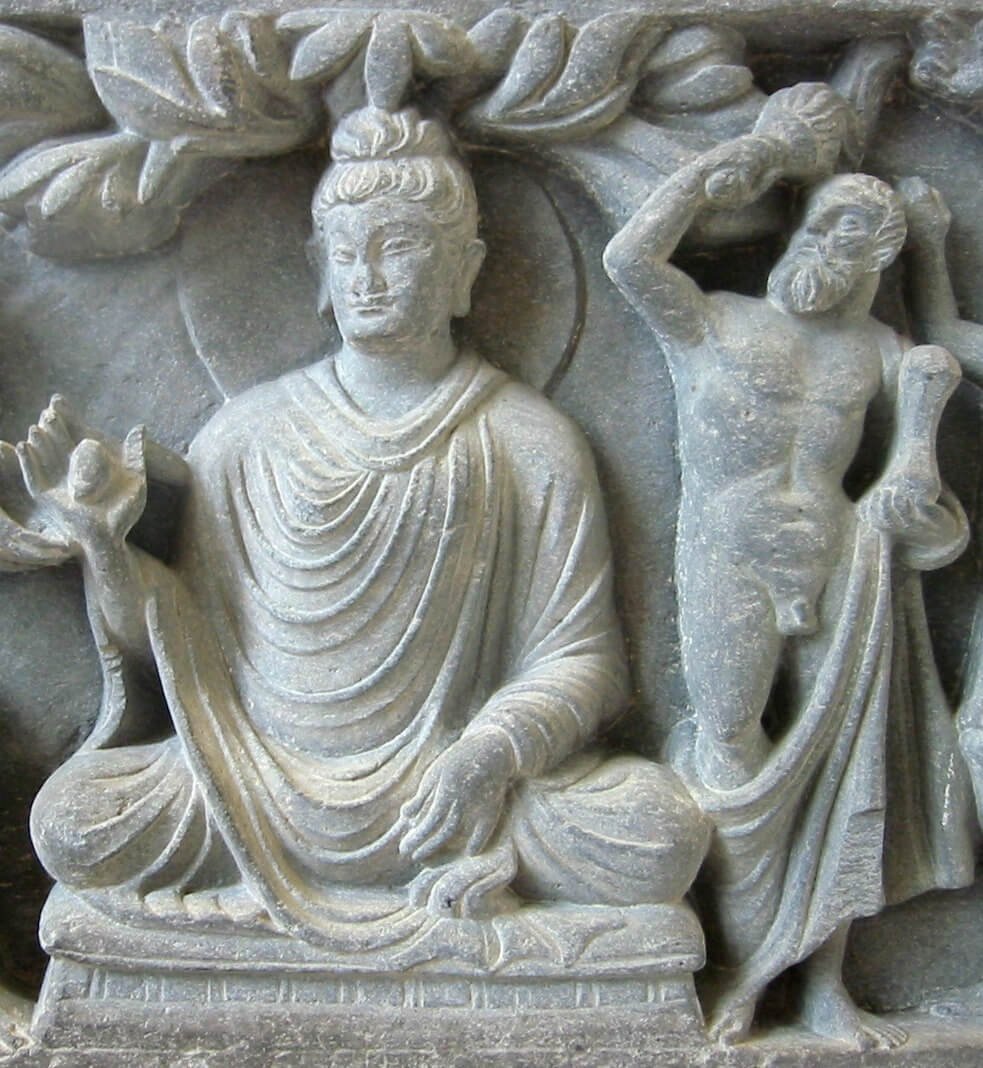

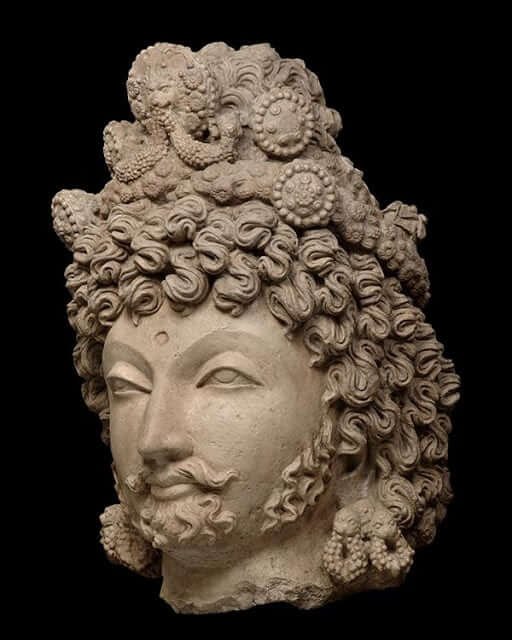
The synthesis of Greek and Buddhist elements in art manifested in various forms, including sculpture, architecture, and relief art. The sculptures from this period are particularly notable for their elaborate drapery, reminiscent of Greek god statues, combined with the serene, contemplative facial expressions characteristic of Buddhist art. This blend of Greek artistic techniques with Buddhist iconography and themes resulted in a distinctly new style that had a lasting impact on the development of Buddhist art throughout Asia.
Greco-Buddhist art serves as a powerful example of cultural syncretism, illustrating how artistic expressions can transcend geographical and cultural boundaries to create new, hybrid forms. This artistic tradition not only highlights the interconnectedness of ancient civilizations but also underscores the role of art as a universal language capable of bridging diverse cultures. As such, Greco-Buddhist art remains a fascinating area of study for historians, archaeologists, and art enthusiasts alike, offering insights into the dynamic exchanges between the civilizations of the ancient world.
In conclusion, Greco-Buddhist art represents a significant cultural and artistic phenomenon, embodying the fusion of Eastern and Western traditions. Its legacy continues to influence and inspire the artistic landscape of Asia, serving as a testament to the enduring power of cultural exchange and the universal language of art.
The Legacy of Alexander: The Hellenistic Kingdoms
In the wake of Alexander the Great's death in 323 BCE, the ancient world witnessed the birth of the Hellenistic era, an epoch characterized by the widespread dissemination of Greek culture across the Eastern Mediterranean and Near East. This period, extending until the consolidation of the Roman Empire in 31 BCE, was defined by the division of Alexander's vast dominions among his generals, the Diadochi. These divisions gave rise to several Hellenistic kingdoms, each contributing to the cultural and political landscape of the era in unique ways.
The Fragmentation of an Empire
Alexander's untimely demise left his empire leaderless, sparking a power struggle among his generals. This turbulent period resulted in the establishment of several key Hellenistic kingdoms, including:
The Ptolemaic Kingdom in Egypt: Ptolemy I Soter, seizing control of Egypt, founded a dynasty that made Alexandria its cultural and political heart. This city, famed for its library and the lighthouse, became a beacon of Hellenistic culture. The Ptolemaic dynasty, culminating in the reign of Cleopatra VII, played a pivotal role in the Roman political arena, marking the end of the Hellenistic period with its fall.
The Seleucid Empire: Seleucus I Nicator carved out a realm that spanned from the Near East to Central Asia. The Seleucid capitals, Seleucia and later Antioch, were centers of Greek culture and governance. Despite its cultural achievements, the empire experienced internal strife and external conflicts, which highlights the difficulties in controlling such a vast area.
The Antigonid Dynasty in Macedon: Emerging victorious from the Wars of the Diadochi, the Antigonid dynasty ruled Macedonia and parts of Greece. The region experienced ongoing conflicts as a result of their attempts to rule over the Greek city-states.
The Attalid Dynasty in Pergamon: The Attalids, ruling over Pergamon, are celebrated for their contributions to the arts and architecture. Pergamon itself emerged as an intellectual hub, adorned with monumental buildings and sculptures that reflected the rich cultural fabric of the Hellenistic world.
The Bosporan Kingdom
The Bosporan Kingdom, situated around the Cimmerian Bosporus (now the Strait of Kerch, connecting the Black Sea and the Sea of Azov), served as a crucial trade and cultural link between the Mediterranean world and the nomadic tribes of the Eurasian Steppe. Its economy thrived on agriculture, fishing, and trade, particularly in grain and fish, which were highly prized commodities in the Greek world.
This kingdom was characterized by a significant degree of cultural syncretism. Greek settlers and locals, including Scythians and Sarmatians, created a unique blend of cultures. Greek artistic and architectural influences were evident, yet they incorporated distinct local elements, showcasing the fusion of Greek and barbarian traditions.
Despite its location on the periphery of the Hellenistic world, the Bosporan Kingdom maintained a remarkable degree of political stability and autonomy. It managed to navigate the complex diplomatic landscape of the era, maintaining independence by forging alliances with powerful neighbors and leveraging its economic strengths.
The Greco-Bactrian Kingdom
Located in what is now Afghanistan and Central Asia, the Greco-Bactrian Kingdom was established by Diodotus I around 256 BCE. It served as a cultural and commercial crossroads, where Greek, Persian, and Central Asian influences intersected, fostering a rich and diverse Hellenistic culture far from the Mediterranean heartlands.
The Greco-Bactrians are noted for their military prowess, particularly in their use of heavy cavalry and war elephants. This strength enabled them to expand their territory significantly, at times controlling vast swathes of Central Asia and even parts of North India.
The Greco-Bactrian Kingdom played a pivotal role in the transmission of Buddhism into East Asia. The fusion of Greek and Buddhist art created the distinctive Greco-Buddhist art style, which had a lasting influence on Buddhist iconography and architecture across Asia.
The Indo-Greek Kingdom
The Indo-Greek Kingdoms, formed by the successors of the Greco-Bactrians, exemplified the integration of Greek culture with that of the Indian subcontinent. Greek rulers adopted Indian titles, and their coinage featured a blend of Greek and Indian symbols, reflecting a deep level of cultural exchange and syncretism.
Indo-Greek rulers contributed to the development of Indian science, art, and religion. Their rule saw the introduction of Hellenistic art forms and the concept of the realistic portrait in Indian art. They also played a role in the spread of Buddhism, sponsoring the construction of stupas and other Buddhist monuments.
Despite the eventual decline of the Indo-Greek Kingdoms, their legacy persisted in the region. They left behind a lasting cultural impact, evident in the fusion of Greek and Indian elements in various aspects of Northern Indian culture, from coinage and sculpture to the adoption of new agricultural techniques and the Greek alphabet for writing several Central Asian languages.
These kingdoms underscore the reach and adaptability of Hellenistic culture, demonstrating how Greek ideas and practices could merge with local traditions to create unique, enduring civilizations far from the lands of their origin.
Cultural Fusion and Intellectual Flourishing
An unprecedented cultural synthesis is what makes the Hellenistic period unique. Greek language, art, and customs spread far and wide, melding with local traditions to create a vibrant, shared Hellenistic culture. This era was also marked by remarkable advancements in science, mathematics, astronomy, and philosophy, much of which centered around the fabled Library of Alexandria.
Yet the era was not without its conflicts. The Hellenistic kingdoms were frequently embroiled in warfare, both amongst themselves and against external foes. This constant state of military tension highlighted the political fragmentation of the period, even as it contributed to the cultural and economic prosperity of the region.
Economic Growth and the Spread of Hellenism
The Hellenistic era witnessed significant economic expansion, facilitated by increased trade between East and West. The flourishing of cities and the spread of Greek culture fostered a rich exchange of ideas and commodities, contributing to the economic vitality of the period.
The Hellenistic period, stemming from the division of Alexander the Great's empire, stands as a testament to the enduring influence of Greek culture. The kingdoms that emerged in the aftermath of Alexander's death each played a role in shaping the course of Mediterranean history. Through their contributions to art, science, and politics, they ensured that the legacy of Hellenism would permeate the fabric of Western civilization, leaving an indelible mark on the annals of history.
Hyperdiffusionism: The Contours of a Pseudoarchaeological Hypothesis
Hyperdiffusionism, a term that echoes through the corridors of pseudoarchaeology, proposes a singular, albeit controversial, narrative for the development and dissemination of cultural practices, technologies, and religious beliefs across ancient civilizations. This hypothesis, which has its roots in the early 20th-century scholarship of individuals like Grafton Elliot Smith, contends that a single progenitor spread the cultural branches of great civilizations far and wide, from the building of pyramids to the worship of solar deities.
At the heart of hyperdiffusionism lies the contention that a singular, often mythical, civilization—be it Atlantis, Lemuria, or a historically recognized culture like ancient Egypt—acted as the cultural fountainhead from which all major civilizations drew their inspirations. This notion extends to various facets of human endeavor, including religious practices, architectural marvels like megaliths, and even the intricate process of mummification, pointing towards a linear transmission of ideas and practices across vast geographical expanses.
The Proponents and Their Propositions
Grafton Elliot Smith, one of the most vocal advocates of this theory, attributed a wide array of cultural phenomena, from megalithic constructions to sun worship, to the diffusion of a so-called Heliolithic culture, with ancient Egypt posited as the epicenter of this cultural wave. Smith's claims, along with those of Charles Hapgood (who said that ancient sea kings mapped out a prehistoric world that was much more connected than was previously thought) and Barry Fell (who thought that Celts and Phoenicians came to New England), create an interesting web of civilization-spanning connections that are based on speculation rather than history.
Critiques and Counterpoints
The hypothesis, however, has not been without its detractors. Scholars like Alexander Goldenweiser and Stephen Williams have criticized hyperdiffusionism for its lack of empirical support and for often ignoring the possibility of independent invention and parallel development among different societies. The theory has been lambasted for its overreliance on coincidental similarities and its failure to account for the complexity and diversity of human cultures, which may develop similar solutions to universal challenges independently of one another.
Alice Kehoe has further criticized hyperdiffusionism as a "grossly racist ideology," suggesting that it underestimates the capacity of non-European societies for innovation and cultural complexity. Her work points towards a more nuanced understanding of cultural exchange, one that allows for independent invention and acknowledges the myriad ways in which societies can interact and influence each other.
Reflections on the Debate
The debate over hyperdiffusionism underscores a broader discussion about the nature of cultural exchange and development. While the theory itself may offer an oversimplified view of human history, it nevertheless opens up avenues for exploring the interconnectedness of ancient civilizations. It reminds us of the human propensity to seek connections and to understand our past as a shared narrative woven from the threads of diverse cultures.
In the end, hyperdiffusionism, with its grand narrative of cultural genesis and dissemination, serves as a testament to the human imagination and our enduring quest to trace the origins of the myriad practices and beliefs that bind us across time and space. While it may not provide a definitive account of our collective past, it certainly enriches the tapestry of human history with its bold conjectures and invites us to question, explore, and debate the myriad pathways through which cultures evolve and influence one another.
The Largest Cretaceous Carnivore Ever Wasn't The T. Rex
In this captivating video, we delve into the popular perception of Tyrannosaurus rex as the ultimate ruler of the Cretaceous period. Often hailed as the undisputed king of dinosaurs, T. rex is commonly depicted as the largest predator of its time. However, a closer examination reveals a surprising twist: while T. rex certainly reigns as the largest carnivorous dinosaur, it was not the apex predator of the Cretaceous era. That distinction belongs to a truly formidable creature - the Mosasaurus. Join us as we unravel the mysteries surrounding these ancient giants and explore the fascinating world of prehistoric predators.
Unexplained Conspiracies Of The Vatican
The Resurrection is a sculpture located at the Vatican that depicts the resurrection of Jesus, but some have called it the "Demonic Idol in the Vatican" due to its eerie appearance resembling a demonic serpent rising from the depths of hell. The sculpture was installed in 1977 by sculptor Pericay Fazzini and is a whopping 66 ft long and 23 ft tall. The hall in which it is located, the Audience Hall of Paul VI, was designed by architect and engineer Pierre Luigi Nervi in 1964 and has been associated with other snake imagery. The hall is where the pope holds his weekly audience whenever he can't make an appearance outside at St. Peter's Square due to weather.
The Vatican's secret archive is said to hold over 17 million pages of documents, and some conspiracy theorists believe that proof of extraterrestrial life is hidden somewhere within it. Cardinal Conrado Balduchi of the Vatican once stated that meetings with aliens should not be seen as demonic and that instead they deserve to be carefully studied. He also referred to a paragraph in the New Testament in which St. Paul refers to Jesus Christ as king of the universe, which could imply that Jesus is the king of all things in the universe, including aliens.
The Vatican secret archive has roughly 53 miles of shelving filled with treasures and ancient texts that very few have ever had the privilege of seeing. While the existence of the archive is real, nobody really knows what's hiding inside and even though the Vatican has tried to remove the mystery around their archive by changing the name from secret archive to Apostolic archive.
12 Most Amazing Archaeological Finds
Few things rival the allure of recent archaeological discoveries. Unlike artifacts unearthed decades ago, which have been extensively scrutinized and dissected, the mysteries surrounding newly found relics remain largely intact. These recent revelations offer a tantalizing glimpse into the lives and cultures of our ancient ancestors, reminding us that there is still so much to uncover and understand. Let's embark on a journey of discovery as we delve into these fascinating findings, shedding light on our past and enriching our understanding of human history.
Why Does the Number 7 Appear Everywhere in Religion?
In this insightful video, we delve into the profound significance behind the pervasive appearance of the number seven in both the Bible and various religious traditions. What elevates the number seven to a sacred status across cultures and centuries? Let's uncover the deeper meanings and universal symbolism embedded within this mystical number.
Exterior of the Chora Church in Istanbul, today a museum. It is famous for it Byzantine mosaics.
Turkey Converts The Famous Byzantine Chora Monastery Into a Mosque
The Directorate of Religious Foundations in Turkey has officially announced that the historic Byzantine-era Chora Monastery in Istanbul is set to be inaugurated as a mosque in May, dispelling earlier rumors suggesting that the mosque would commence Islamic services on February 23.
According to Turkey's Anadolu Agency, which referred to the official declaration, the Chora Monastery is currently undergoing restoration, with efforts underway to prepare it for religious use by May. A precise opening date will be shared upon the completion of these preparations.
This clarification follows false information that circulated on Tuesday from unofficial sources that claimed the mosque conversion would open in February.
The main church of the Chora Monastery, with origins dating back to the 6th century AD, is renowned for its extraordinary mosaics and frescoes that were crafted between 1305 and 1320, under the rule of the Palaiologos dynasty. This site stands as one of the most significant Byzantine monuments in Istanbul, alongside the Hagia Sophia and the Pammakaristou Monastery (now known as the Fethiye Mosque), particularly noted for its exquisite Byzantine mosaics.
Initially transformed into a mosque in 1511, 58 years following the capture of Constantinople, the Chora Monastery was later designated as a museum in 1945 by a Turkish Cabinet decision. This decision facilitated a significant restoration and conservation project led by American experts, which unveiled the stunning mosaics hidden beneath plaster. However, in 2019, Turkey's Council of State overturned the 1945 museum conversion, and the following year, President Recep Tayyip Erdogan decreed the building's return to a mosque.
The Chora Monastery: A Byzantine Jewel in Constantinople (Istanbul)
Depiction of the Chora Church/Mosque, c. 1900
From Library of Congress.
The Chora Monastery, nestled in the historic heart of Istanbul, stands as a remarkable testament to Byzantine artistry and architecture. Originally established in the 6th century AD, this former monastic complex captivates visitors with its stunning mosaics and frescoes, mainly from the early 14th century, a period marked by the reign of the Palaiologos dynasty. These artworks, rich in theological symbolism and artistic detail, depict various biblical scenes and figures, offering a window into the spiritual and cultural world of Byzantium.
The monastery's Greek name, "Chora," meaning "countryside," reflects its initial location outside the walls of Constantinople, though the city's expansion eventually encompassed the site. Over the centuries, the Chora Monastery has witnessed significant transformations, notably its conversion into a mosque in 1511, after the Ottoman conquest of Constantinople. This marked a new chapter in its storied history, leading to the alteration of its original Christian artworks under Islamic rule.
In 1945, the Turkish government transitioned the building into a museum, unveiling a comprehensive restoration project that brought its hidden mosaics and frescoes back to light. However, recent decisions by Turkey's authorities have once again redefined its purpose, reinstating the Chora as a mosque. Despite these changes, the Chora Monastery remains a symbol of the enduring legacy of Byzantine culture in Istanbul, bridging past and present through its architectural grandeur and the timeless beauty of its artworks.
Tensions and Cultural Heritage at Risk: The Impact of Turkey's Foreign Policy
A light show of Ottoman Sultan Mehmed’s 15th-century conquest was displayed over the Hagia Sophia, an architectural treasure of Istanbul.
Turkey's foreign policy, particularly its decisions regarding the conversion of historic Byzantine churches like Hagia Sophia and others into mosques, has ignited tensions not only with Greece but also with the international community. These actions have stirred debates around cultural heritage, religious freedom, and international diplomacy, underscoring the delicate balance between national sovereignty and global heritage preservation.
Hagia Sophia, a UNESCO World Heritage Site in Istanbul, originally a cathedral, later a mosque, and then a museum, was reconsecrated as a mosque in 2020. This move, alongside similar conversions like that of the Chora Monastery, has been perceived as a symbolic assertion of Turkey's Islamic identity and sovereignty. However, it has also been critiqued as a step that overlooks the pluralistic history and universal significance of these monuments.
The tension between Greece and Turkey is multifaceted, rooted in historical disputes, territorial claims, and differing perspectives on maritime rights, among other issues. The conversion of Byzantine churches, integral to Greece's cultural and religious heritage, into mosques exacerbates these tensions, viewed by many as an erasure of the shared Byzantine legacy that underpins the historical and cultural identity of the Eastern Mediterranean.
From a global perspective, the conversion of these sites raises concerns about the preservation of cultural heritage. These monuments are not just architectural wonders; they are repositories of history, art, and collective memory, representing centuries of Christian and Islamic traditions coexisting within the same spaces. Alterations to their structure or purpose risk damaging their integrity and the universal value they hold. The international community, including organizations like UNESCO, has voiced concerns about the need for careful stewardship of such sites to ensure they remain accessible and preserved for future generations.
The challenge lies in balancing respect for a nation's right to determine the use of its historical sites with the imperative to safeguard global cultural heritage. As these conversions continue to draw scrutiny, they serve as a reminder of the importance of dialogue, diplomacy, and international cooperation in managing and preserving the world's shared cultural treasures. The preservation of these monuments is not just a matter of maintaining physical structures but also of honoring and understanding the complex layers of human history they embody.

